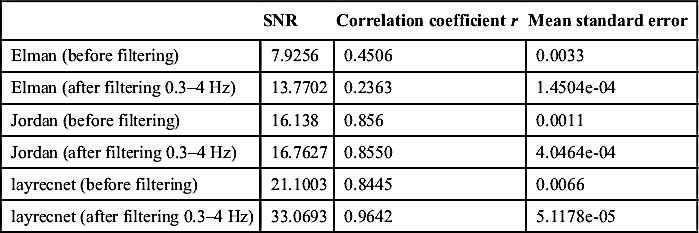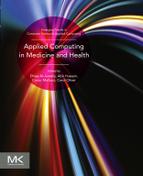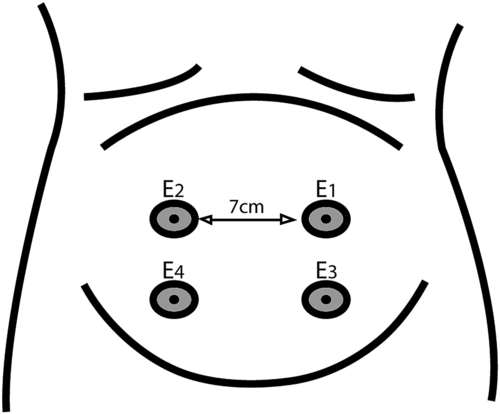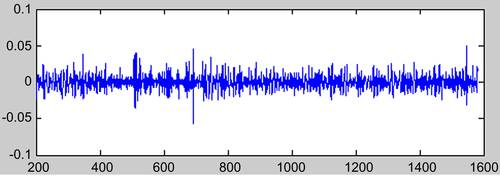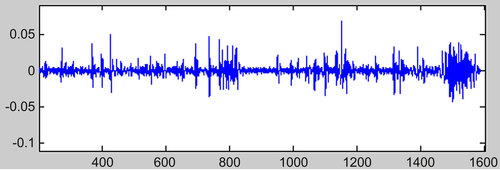[1] Akay M.F. Support vector machines combined with feature selection for breast cancer diagnosis. Expert Syst Appl. 2009;36(2):3240–3247.
[2] Arvind R, Karthik B, Sriraam N, Kannan J.K. Automated Detection of PD Resting Tremor Using PSD with Recurrent Neural Network Classifier. In: International Conference on Advances in Recent Technologies in Communication and Computing. 2010:414–417.
[3] Akrami A, Solhjoo S, Nasrabad A. EEG-Based Mental Task Classification: Linear and Nonlinear Classification of Movement Imagery. In: Engineering in Medicine and Biology 27th Annual Conference. Shanghai, China. 2005:4626–4629.
[4] Al-Aweel I.C, Krishnamurthy K.B, Hausdorff J.M, Mietus J.E, Ives J.R, Blum A.S, et al. Postictal heart rate oscillations in partial epilepsy. Neurology. 1999;53(7).
[5] Baghamoradi S, Naji M, Aryadoost H. Evaluation of cepstral analysis of EHG signals to prediction of preterm labor. In: 18th Iranian Conference on Biomedical Engineering. Tehran, Iran. 2011:1–3.
[6] Balli T, Palaniappan R. Classification of biological signals using linear and nonlinear features. Physiol Meas. 2010;31(7):903–920. Available at: http://www.ncbi.nlm.nih.gov/pubmed/20505216 (accessed November 20, 2013).
[7] Baker P.N, Kenny L. Obstetrics by Ten Teachers. 19th ed. London: Hodder Arnold; 2011.
[8] Bozler E. Electrical Stimulation and Conduction in Smooth Muscle. Am J Physiol. 1938;122(3):614–623.
[9] Buhimschi C, Garfield R.E. Uterine contractility as assessed by abdominal surface recording of electromyographic activity in rats during pregnancy. Am J Obstet Gynecol. 1996;174(2):744–753.
[10] Chen H-Y, Chuang C-H, Yang Y-J, Wu T-P. Exploring the risk factors of preterm birth using data mining. Expert Syst Appl. 2011;38(5):5384–5387. Available at: http://linkinghub.elsevier.com/retrieve/pii/S0957417410011619 (accessed December 23, 2012).
[11] Chendeb M, Khalil M, Hewson D, Duchêne J. Classification of non stationary signals using multiscale decomposition. J Biomed Sci Eng. 2010;3(2):193–199.
[12] Cheung P. Evaluating the Effect of Data Preprocessing on the Prediction of Preterm Deliveries from EHG using Machine Learning Algorithms (MSc thesis). Liverpool, UK: John Moores Univ.; 2012.
[13] Chen X, Zhu X, Zhang D. A discriminant bispectrum feature for surface electromyogram signal classification. Med Eng Phys. 2010;32(2):126–135. Available at: http://www.ncbi.nlm.nih.gov/pubmed/19955011 (accessed November 4, 2013).
[14] Cheron G, Draye J-P, Bourgeios M, Libert G. A Dynamic Neural Network Identification of Electromyograph and Arm Trajectory Relationship during Complex Movements. IEEE Trans Biomed Eng. 1996;43(5):552–558.
[15] Chowdhury R.H, Reaz M.B.I, Ali M, Bakar A, Chellappan K, Chang T.G. Surface electromyography signal processing and classification techniques. Sensors (Basel, Switzerland). 2013;13(9):12431–12466. Available at: http://www.ncbi.nlm.nih.gov/pubmed/24048337 (accessed October 31, 2013).
[16] Chung J.R, Kwon J, Choe Y. Evolution of recollection and prediction in neural networks. In: 2009 International Joint Conference on Neural Networks. 2009:571–577.
[17] Derya Übeyli E. Recurrent neural networks employing Lyapunov exponents for analysis of ECG signals. Expert Syst Appl. 2010;37(2):1192–1199.
[18] Diab M.O, El-Merhie A, El-Halabi L.K.N. Classification of uterine EMG signals using supervised classification method. J Biomed Sci Eng. 2010;3(9):837–842. Available at: http://www.scirp.org/journal/PaperDownload.aspx?DOI=10.4236/jbise.2010.39113 (accessed April 2, 2013).
[19] Doret M. Uterine Electromyograpy Characteristics for early Diagnosis of Mifepristone-induced Preterm Labour. Obstet Gynecol. 2005;105(4):822–830.
[20] Devedeux D, Marque C, Mansour S, Germain G, Duchene J. Uterine electromyography: a critical reviewe. Am J Obstet Gynecol. 1993;169(6):1636–1653.
[21] Eswaran H, Wilson J.D, Murphy P, Preissl H, Lowery C.L. Application of wavelet transform to uterine electromyographic signals recorded using abdominal surface electrodes. J Matern-Fetal Neonat Me. 2002;11(3):158–166. Available at: http://www.ncbi.nlm.nih.gov/pubmed/12380670 (accessed 5th August 2013).
[22] Fele-Žorž G, Kavšek G, Novak-Antolič Z, Jager F. A comparison of various linear and non-linear signal processing techniques to separate uterine EMG records of term and pre-term delivery groups. Med Biol Eng Comput. 2008;46(9):911–922.
[23] Forney E.M, Anderson C.W. Classification of EEG during imagined mental tasks by forecasting with Elman Recurrent Neural Networks. In: The 2011 International Joint Conference on Neural Networks. 2011:2749–2755.
[24] Fergus P, Cheung P, Hussain A, Al-Jumeily D, Dobbins C, Iram S. Prediction of Preterm Deliveries from EHG Signals Using Machine Learning. PLoS One. 2013;8(10):e77154.
[25] Garfield R.E, Maner W.L, MacKay L.B, Schlembach D, Saade G.R. Comparing uterine electromyography activity of antepartum patients versus term labor patients. Am J Obstet Gynecol. 2005;193(1):23–29.
[26] Goldenberg R.L, Culhane J.F, Iams J.D, Romero R. Epidemiology and causes of preterm birth. Lancet. 2008;371(9606):75–84.
[27] Gondry J, Marque C, Duchene J. Electrohysterography during pregnancy: preliminary report. Biomed Instrum Technol. 1993;27(4):318–324.
[28] Guler N, Ubeyli E, Guler I. Recurrent neural networks employing Lyapunov exponents for EEG signals classification. Expert Syst Appl. 2005;29(3):506–514.
[29] Greenough A. Long term respiratory outcomes of very premature birth (<32 weeks). Semin Fetal Neonatal Med. 2012;17(2):73–76.
[30] Garfield R.E, Maner W.L. Uterine Electromyography in Humans – Contractions, Labor, and Delivery. In: Jarm T, Kramar P, Zupanic A, eds. 11th Mediterranean Conference on Medical and Biomedical Engineering and Computing. Heidelberg, Berlin: Springer; 2007:128–130.
[31] Haykin S. Neural Networks: A comprehensive Foundation. Upper Saddle River, NJ: Prentice Hall PTR; 1998.
[32] Hassan M, Terrien J, Alexandersson A, Marque C, Karlsson B. Nonlinearity of EHG signals used to distinguish active labor from normal pregnancy contractions. In: 32nd Annual International Conference of the IEEE EMBS. 2010:2387–2390.
[33] Herrera J.L. Time Series Prediction Using Inductive Reasoning Techniques Instituto de Organizacion y Control de Sistemas Industriales. 1999.
[34] Hüsken M, Stagge P. Recurrent neural networks for time series classification. Neurocomputing. 2003;50(C):223–235.
[35] Ilbay K, Übeyli E.D, Ilbay G, Budak F. A New Application of Recurrent Neural Networks for EMG-Based Diagnosis of Carpal Tunnel Syndrome. In: Cardot H, ed. Recurrent Neural Network for Temporal Data Processing. Croatia: InTech; 2011.
[36] Iams J.D. Prediction and early detection of preterm labor. Obstet Gynecol. 2003;101(2):402–412. Available at: http://www.ncbi.nlm.nih.gov/pubmed/12576267 (accessed May 2013).
[37] Kavsek G, Pajntar M, Leskosek B. Electromyographic activity of the uterus above the placental implantation site. Gynecol Obstet Invest. 1999;48(2).
[38] Konrad P. The ABC of EMG: A Practical Introduction to Kinesiological Electromyography. Noraxon INC, USA, 1.0; 2005.
[39] Koskela T, Varsta M, Heikkonen J, Kaski K. Temporal Sequence Processing using Recurrent SOM. In: Proceedings of the Second International Conference Knowledge-Based Intelligent Electronic Systems. Adelaide, SA: IEEE; 1998:21–23 Retrieved from. http://ieeexplore.ieee.org/xpls/abs_all.jsp?arnumber=725861&tag=1.
[40] Kumar S.P, Sriraam N, Benakop P.G. Automated detection of epileptic seizures using wavelet entropy feature with recurrent neural network classifier. In: TENCON 2008-2008 IEEE Region 10 Conference. Hyderabad: IEEE; 2008:1–5.
[41] Leman H, Marque C, Gondry J. Use of the electrohysterogram signal for characterization of contractions during pregnancy. IEEE Trans Biomed Eng. 1999;46(10):1222–1229.
[42] Ling S.H, Leung F.H.F, Leung K.F, Lam H.K, Iu H.H.C. An Improved GA Based Modified Dynamic Neural Network for Cantonese-Digit Speech Recognition. In: Grimm M, Korschel K, eds. Robust Speech Recognition and Understanding. Vienna, Austria: I-Tech; 2007:460.
[43] Liu B, Wang M, Yu H, Yu L, Liu Z. Study of Feature Classification Methods in BCI Based on Neural Networks. In: Conference proceedings: … Annual International Conference of the IEEE Engineering in Medicine and Biology Society. IEEE Engineering in Medicine and Biology Society. Conference (Vol.3: 2932–5). China.
[44] La Rosa P.S, Nehorai A, Eswaran H, Lowery C.L, Preiss H. Detection of uterine MMG contractions using a multiple change-point estimator and K-means cluster algorithm. International Congress Series. 2007;1300:745–748. Available at: http://linkinghub.elsevier.com/retrieve/pii/S0531513107001094 (accessed January 15, 2013).
[45] Lucovnik M, Maner W.L, Chambliss L.R, Blumrick R, Balducci J, Novak-Antolic Z, Garfield R.E. Noninvasive uterine electromyography for prediction of preterm delivery. Am J Obstet Gynecol. 2011;204(3):228 e1-10.
[46] Machado L.O. No Title Medical Application Of Artificial Neural Networks: Connectionist Models of Survival. 1996, March.
[47] Makarov V.A, Song Y, Velarde M.G, Hübner D, Cruse H. Elements for a general memory structure: properties of recurrent neural networks used to form situation models. Biol Cybern. 2008;98(5):371–395.
[48] Marque C.K, Terrien J, Rihana S, Germai G. Preterm labour detection by use of a biophysical marker: the uterine electrical activity. BMC Pregnancy Childbirth. 2007;7(Suppl 1):S5. Available at: http://www.pubmedcentral.nih.gov/articlerender.fcgi?artid=1892062&tool=pmcentrez&rendertype=abstract (accessed January 15, 2013).
[49] Maner W.L, Garfield R.E, Maul H, Olson G, Saade G. Predicting term and preterm delivery with transabdominal uterine electromyography. Obstet Gynecol. 2003;101(6):1254–1260.
[50] Marshall J. Regulation of activity in uterine smooth muscle. Physiol Rev Suppl. 1962;5:213–217.
[51] Mangham L.J, Petrou S, Doyle L.W, Draper E.S, Marlow N. The Cost of Preterm Birth Throughout Childhood in England and Wales. Pediatrics. 2009;123:312–327.
[52] Muglia L.J, Katz M. The Enigma of Spontaneous Preterm Birth. N Engl J Med. 2010;362(6):529–535.
[53] Moslem B, Khalil M, Diab M, Chkeir A, Marque C. A Multisensor Data Fusion Approach for Improving the Classification Accuracy of Uterine EMG Signals. In: Electronics, Circuits and Systems (ICECS), 2011 18th IEEE International Conference on 11th-14th Dec. Beirut, Lebanon: IEEE; 2011:93–96.
[54] Moslem B, Khalil M, Diab M, Chkeir A, Marque C. Classification of multichannel uterine EMG signals by using a weighted majority voting decision fusion rule. 2012 16th IEEE Mediterranean Electrotechnical Conference. 2011:331–334. Available at: http://ieeexplore.ieee.org/lpdocs/epic03/wrapper.htm?arnumber=6196442 (accessed March 2013).
[55] Mougiakakou S.G, Prountzou A, Iliopoulou D, Nikita K.S, Vazeou A, Bartsocas C.S. Neural network based glucose - insulin metabolism models for children with Type 1 diabetes. In: Conference proceedings: Annual International Conference of the IEEE Engineering in Medicine and Biology Society. IEEE Engineering in Medicine and Biology Society; 2006:3545–3548 Conference, 1(Mm).
[56] Physionet.org. The Term-Preterm EHG Database (TPEHG DB). 2010 Retrieved from. http://www.physionet.org/pn6/tpehgdb/.
[57] Petrosian A.A, Prokhorov D.V, Schiffer R.B, Petrosian A.A. Recurrent Neural Network based Approach for Early Recognition of Alzheimer's Disease in EEG. Recurrent Neural Network based Approach for Early Recognition of Alzheimer's Disease in EEG. Clin Neurophysiol. 2001;112(8):1378–1387.
[58] Petrosian A, Prokhorov D.V, Homan R, Dashei R, Ii D.W. Recurrent neural network based prediction of epileptic seizures in intra- and extracranial EEG. Neurocomputing. 2000;30:201–218.
[59] Rattihalli R, Smith L, Field D. Prevention of preterm births: are we looking in the wrong place? Edition, Archives of disease in childhood. Fetal an dneonatal. 2012;97(3):160–161.
[60] Rabotti C, Mischi M, van Laar J, Oei G, Bergmans J. Estimation of internal uterine pressure by joint amplitude and frequency analysis of Electrohysterographic signals. Physiol Meas. 2008;29(7):829–841. Available at: http://www.ncbi.nlm.nih.gov/pubmed/18583724 (accessed January 13, 2014).
[61] Rabotti C. Characterization of uterine activity by electrohysterography (PhD thesis). Technische Universteit Eindhoven; 2010.
[62] Shortliffe E.H, Perreault L.E, Fagan L.M, Wiederhold G. Medical Informatics: Computer Applications in Medicine. Reading: Addison-Wesley; 1990.
[63] Silva L.E.V, Duque J.J, Guzo M.G, Soares I, Tin R. Medical Multivariate Signal Reconstruction Using Recurrent Neural Network. In: Computing in Cardiology. Piscataway, NJ: IEEE; 2010:445–447.
[64] Shi S.Q, Maner W.L, Mackay L.B, Garfield R.E. Identification of Term and Pre-Term Labor in Rats using Artificial Neural Networks on Uterine EMG Signals. Am J Obstet Gynecol. 2008;198(2):1–10.
[65] Shaker M.M. EEG Waves Classifier using Wavelet Transform and Fourier Transform. Int J Biol Life Sci. 2005;1(2):85–90.
[66] Szkoła J, Pancerz K, Warchoł J. Recurrent neural networks in computer-based clinical decision support for laryngopathies: an experimental study. Computational Intell Neurosci 2011. 2011:289398.
[67] Terrien J, Marque C, Steingrimsdottir T, Karlsson B. Evaluation of adaptive filtering methods on a 16 electrode electrohysterogram recorded externally in labor. In: 11th Mediterranean Conference on Medical and Biomedical Engineering and Computing. Berlin: Springer; 2007:2–5.
[68] Übeyli E.D. Analysis of EEG signals by implementing eigenvector methods/recurrent neural networks. Digital Signal Proc. 2009;19(1):134–143.
[69] Übeyli E.D, Übeyli M. Case Studies for Applications of Elman Recurrent Neural Networks. In: Hu X, Balasubramaniam P, eds. Recurrent Neural Networks. Vienna, Austria: I-Tech; 2008:440.
[70] Van der Heijden A.J, Keijzer-Veen M.G. The Effect of Preterm Birth on Kidney Development and Kidney Function over Time. In: Morrison J.C, ed. Preterm Birth - Mother and Child. Vienna, Austria: InTech; 2012:341–356.
[71] Verplancke T, Van Looy S, Steurbaut K, Benoit D, De Turck F, De Moor G, et al. A novel time series analysis approach for prediction of dialysis in critically ill patients using echo-state networks. BMC Med Inform Decis Mak. 2010;10:4.
[72] WebMd. Premature Labor. 2012. Available at: http://www.webmd.com/baby/premature-labor.
[73] WelcomeBabyHome. The Birth Process. 2006. Available at: http://www.welcomebabyhome.com/pregnancy/pregnancy_birth_process.htm (accessed January 11, 2013).
![]()

